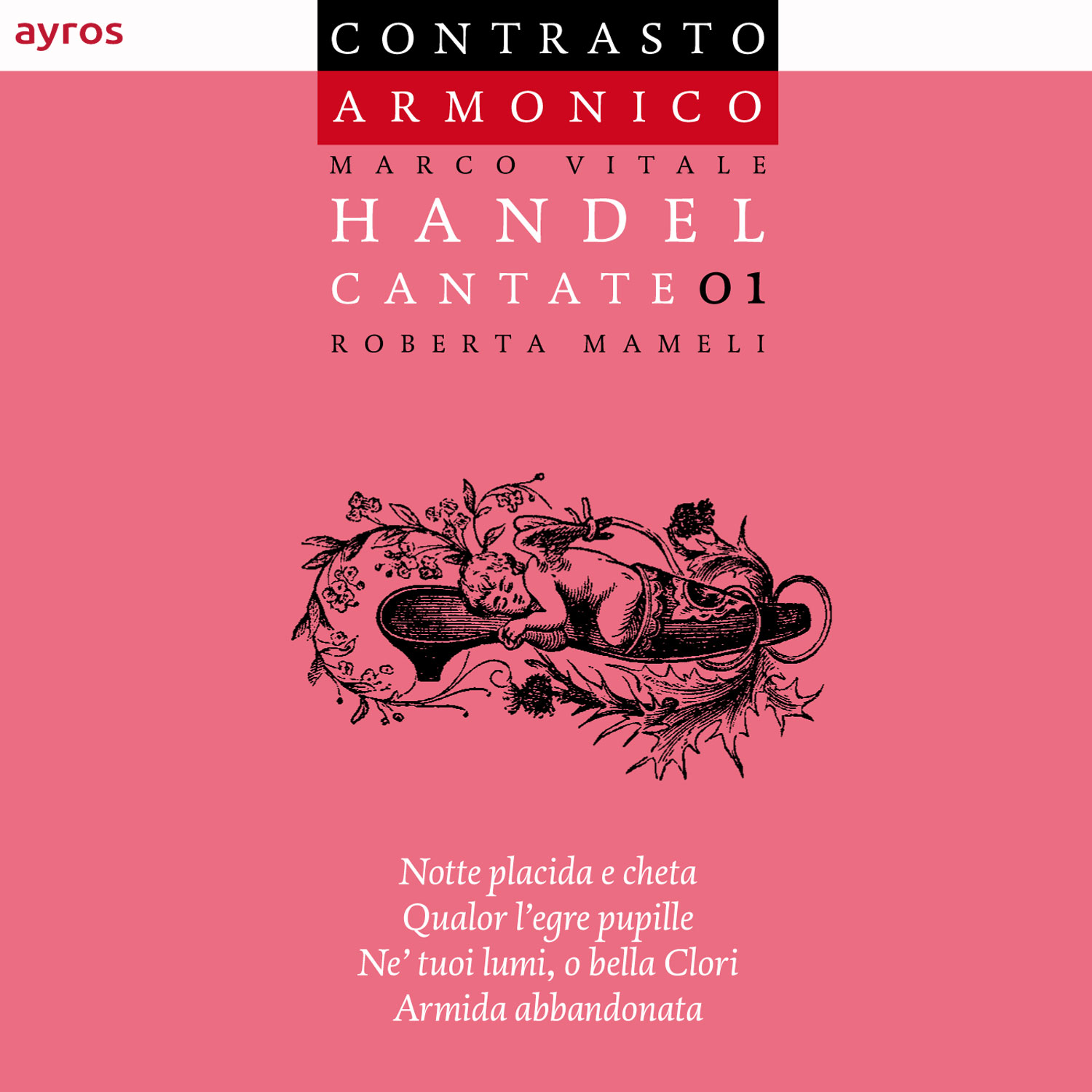Marco Vitale: HANDEL Cantatas on AYROS
During the four years he spent in Italy, George Frederic Handel was a busy boy. Of course, he went there to create a reputation as a composer of opera, but he also spent a considerable amount of energy on the secular cantata. In fact, he wrote over 100 of them, usually scored for voice and a few instruments, mainly strings. These miniature opera scenes usually consist of a pair of arias preceded by recitatives, but they could be expanded as needed to serve the dramatic needs of the scenes musically depicted. The works found on this disc are certainly of that nature, although the first, Notte placida e cheta , is almost double that length, with the second set of pairs using accompanied recitative. If the Pope had banned stage productions, then these were dangerously close to insubordination in their secular operatic nature, even if they were meant to be performed before private patrons.
The first of the cantatas is a languid dream work, in which a shepherd dreams of his beloved Phyllis. The first aria, “Zeffiretti,” is just the sort of imagery that would inspire Handel to compose a gentle, softly flowing line with only the most fluid ornamentation. The violins softly weave like gentle leaves on a stream. In the second part, the strings form an ethereal backdrop, preparing for the recurring sequences of the continuo aria that follows. The final aria is a rather intricate fugue, quite Corelli-like, but perhaps more strict than one might imagine for a secular cantata. I can’t help but think that the composer was barely skirting insolence with this sort of parody in the center of Catholicism. In the second cantata, scored only for voice and continuo, the aria “È il pensier” moves fluidly through various keys, unable to find harmonic rest until the last note, like a ship being tossed around. More unusual, the work ends with a recitative that is more reflective and leaves the listener anticipating an aria that never comes (Handel, apparently realizing that this was unsatisfactory, crossed it out.) The opening aria of the third cantata is a lament, with restless dotted rhythms in the continuo part but a more lyrical, even at times plaintive melodic line. The final aria, “La mia piaga,” is extremely familiar, since Handel apparently reused it two or three times in operas in varied forms. It contains some rather impressive virtuoso passages, replete with close harmonic inflections (mostly to words like “torture” and “pain”) and some rather interesting ornamentation. The final work, however, has a real plot. The sorceress Armide has been abandoned, and the swirling opening accompagnato has her reflecting on her fate, with the lines twisting and turning before finally completely calming into fading chords. This sets up the gorgeous, emotional “Ah! Crudele,” probably the progenitor of all of the famous lamento arias of heroines such as Cleopatra. The final two arias are in dance tempos: the first is a gigue with rapid continuo and string punctuations, while the last, “In tanti affanni miei,” is a mournful Siciliano , with a slow and sorrowful line that moves with slow triple rhythms like a gentle wave.
This is highly effective musical material, made all the more so by the excellent performance of soprano Roberta Mameli. Her voice has depth and resonance, and she is extremely skillful in reproducing the necessary emotions by way of her phrasing and cautious use of ornamentation. It is intimate, blends well with the subtle chamber instrumentation, and filled with expression. This is probably the way that Handel ought to be sung, and she captures the pictorial essence of these small works excellently. It would not have worked, of course, without close cooperation with a similarly sensitive interpretation by Marco Vitale and his ensemble. When required, the continuo (including cellist Marta Semkiw) acts as an equal partner, but they are discreet so as not to overshadow Handel’s exposed vocal lines. The violins are also firm and discrete partners in their two cantatas. In short, this is a disc that plumbs the depths of Handel’s ability to convey emotional texts in a manner that makes it an indispensable part of any early Baroque collection. Bertil van Boer


